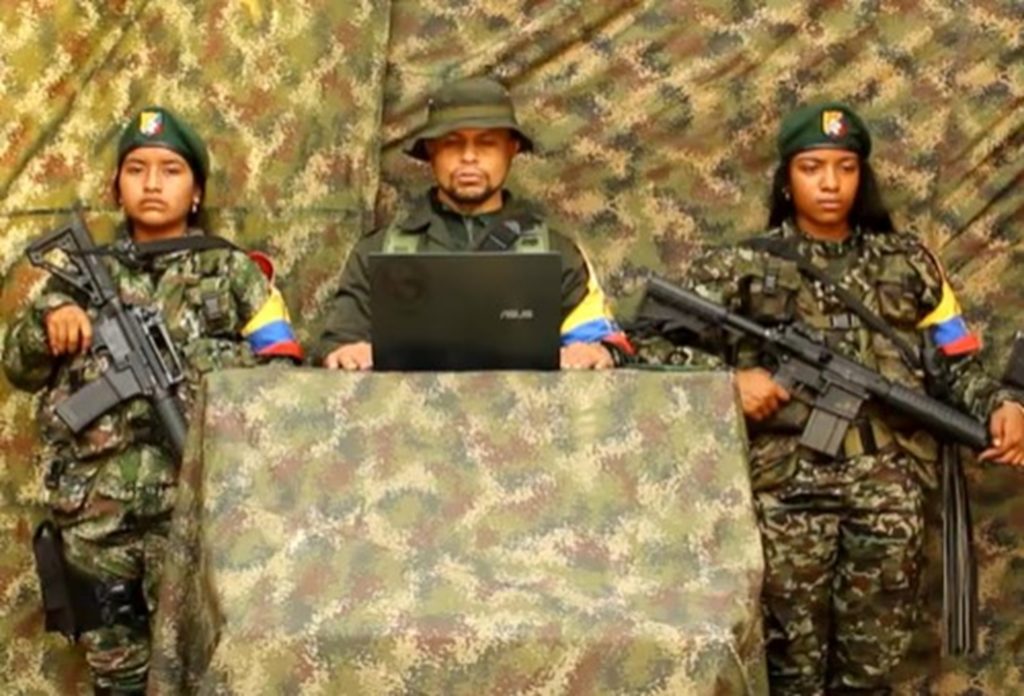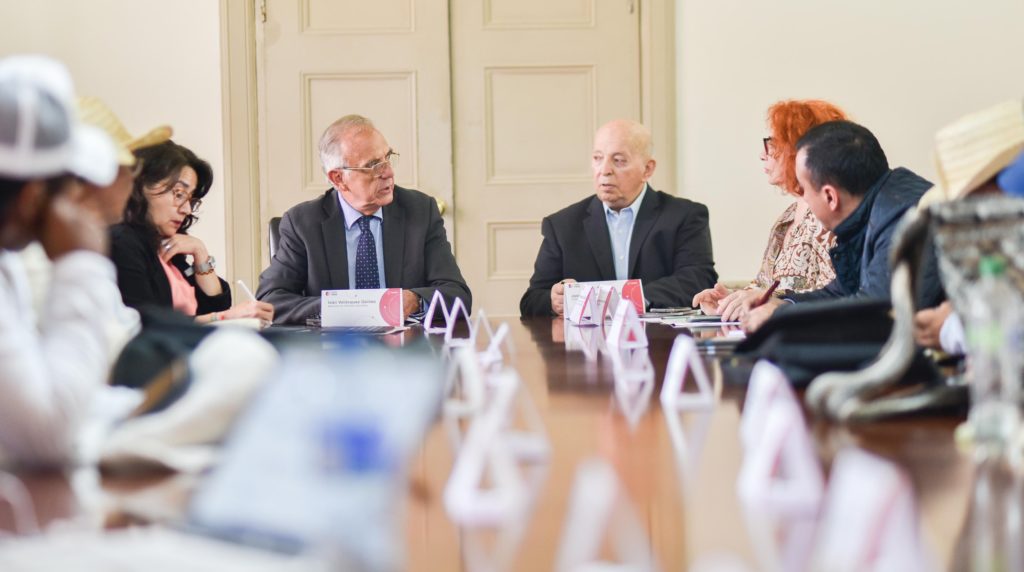
The Central General Staff (EMC) guerrilla group has declared the establishment of a new unit, the Isaias Pardo Front, in Colombia’s southwest. This development comes following their decision to end a ceasefire with the government. Labeled an “internal reorganization,” this action by the EMC, a breakaway faction of the former FARC, occurred around six weeks after peace talks with the government were resumed. Led by Ivan Mordisco, the announcement was made public yesterday, sparking debate over the motives of this unlawful group.
The recent announcement by the EMC guerrillas has significantly impacted Colombia’s political landscape, particularly among government opposition parties. These parties have been skeptical about the peace negotiations with illegal armed factions from the start. According to Otty Patiño, the High Commissioner for Peace, the guerrilla group’s reorganization in the Cauca region—a zone where ceasefire violations have been frequent—could undermine the leadership’s control within the group. This situation poses challenges to the ongoing peace talks, yet discussions continue to resolve.
The new front is headed by so-called Marlon Vasquez, who read out the announcement of the establishment of the military unit “in solidarity and response to the military aggression against Western Bloc Commander Jacobo Arenas,” according to the guerrilla spokesman.
Responsibility or expansion
For the conservative opposition in Colombia, this is a manifestation of the expansion of this armed group, taking advantage of the peace talks with the government. For the government, this could be a demonstration of responsibility and authority by the guerrilla leadership against the faction that did not respect the ceasefire and caused the government of President Petro to announce its rupture.
For the High Commissioner for Peace, Otty Patiño, this announcement would be a way of “having more responsibility at the negotiating table” for the group commanded by Mordisco. According to Patiño, the creation of this new front responds to reasons of “internal reorganization”, something that the official connected to the early start of the new negotiating cycle with the State, which is scheduled for May 15.
“Sometimes you have to think well. They are trying to reorganize to have more responsibility at the negotiating table,” Patiño stated.

Ending violence in Cauca
One of the government’s objectives is to put an end to the endemic violence in Cauca, a region in the southwest of the country where the proliferation of armed groups has caused instability that has lasted for years.
One of the main culprits of this situation is the EMC guerrilla group, whose front in the region has constantly violated the agreements that the leadership has reached with the State at the dialogue table.
This is why, for the High Commissioner for Peace, this internal reorganization of the guerrilla group could be an opportunity to achieve pacification in this conflict-stricken area of the country. “If this internal reorganization makes it easier for them to respect the population, and the ceasefire, well, good. But it is an internal reorganization that they have every right to carry out,” Patiño said in his speech.
The EMC group is made up of dissidents from the Havana peace accords, signed in 2016 by the defunct FARC with the government of then-President Juan Manuel Santos. They were people who did not accept that agreement and went back underground, forming a new organization that claims to be the continuation of the historic FARC.
Today, they are financed by drug trafficking and illegal mining, which generate significant economic income and a consequent military power that fuels violence in the region.
High impact on people
This cycle of violence has a strong impact on people, especially in the departments of Cauca and Narino. It is in this region that the EMC has achieved significant territorial control, based on violence against the state and the civilian population.
The practice of drug trafficking has grown exponentially, which has caused concern in countries bordering Colombia to the south, namely, Ecuador and Peru. The criminal actions against the civilian population are what has finally exhausted the patience of the Colombian president, Gustavo Petro.
Despite it being a star bet of his government, it was the head of state who announced the end of the ceasefire after the umpteenth violation of it by the EMC military structure operating in Cauca. In an attack against the indigenous population fifteen days ago, Carmelina Yule, a human rights defender in the area, was killed.
This was one of 111 “possible” acts of violation of the ceasefire documented by the government on the part of this guerrilla group.
See all the latest news from Colombia and the world at ColombiaOne.com. Contact our newsroom to report an update or send your story, photos and videos. Follow Colombia One on Google News, Facebook, Instagram, and subscribe here to our newsletter.

